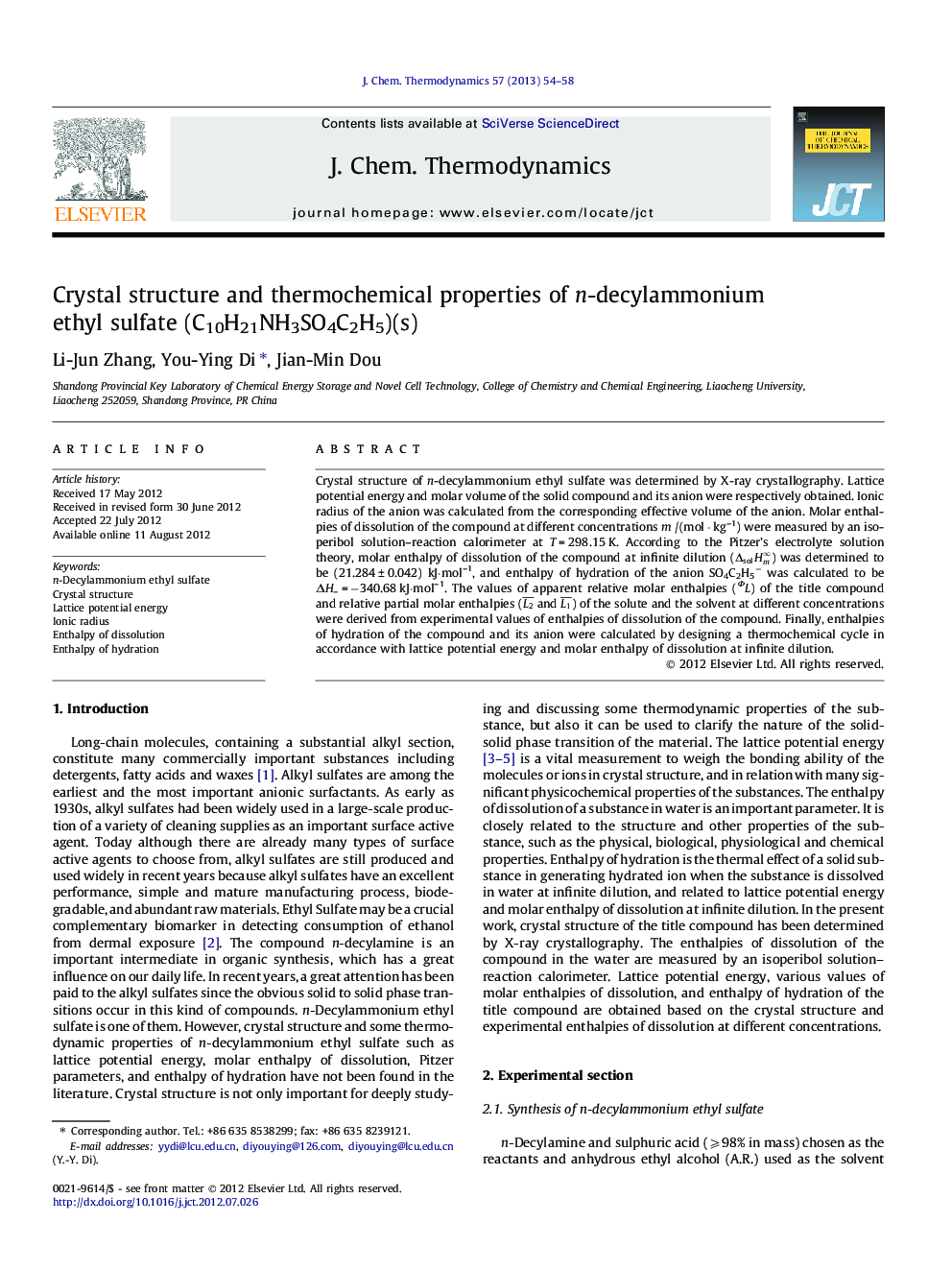| Article ID | Journal | Published Year | Pages | File Type |
|---|---|---|---|---|
| 215734 | The Journal of Chemical Thermodynamics | 2013 | 5 Pages |
Crystal structure of n-decylammonium ethyl sulfate was determined by X-ray crystallography. Lattice potential energy and molar volume of the solid compound and its anion were respectively obtained. Ionic radius of the anion was calculated from the corresponding effective volume of the anion. Molar enthalpies of dissolution of the compound at different concentrations m /(mol · kg–1) were measured by an isoperibol solution–reaction calorimeter at T = 298.15 K. According to the Pitzer’s electrolyte solution theory, molar enthalpy of dissolution of the compound at infinite dilution (ΔsolHm∞) was determined to be (21.284 ± 0.042) kJ·mol–1, and enthalpy of hydration of the anion SO4C2H5− was calculated to be ΔH– = −340.68 kJ·mol–1. The values of apparent relative molar enthalpies (ΦL ) of the title compound and relative partial molar enthalpies (L2¯ and L1¯) of the solute and the solvent at different concentrations were derived from experimental values of enthalpies of dissolution of the compound. Finally, enthalpies of hydration of the compound and its anion were calculated by designing a thermochemical cycle in accordance with lattice potential energy and molar enthalpy of dissolution at infinite dilution.
Graphical abstractCrystal structure of n-decylammonium ethyl sulfate was determined by X-ray crystallography. Lattice potential energy and molar volume of the solid compound and its anion were respectively obtained. Molar enthalpies of dissolution of the compound at different concentrations were measured by an isoperibol solution–reaction calorimeter. According to the Pitzer’s electrolyte solution theory, molar enthalpy of dissolution of the compound at infinite dilution and Pitzer parameters were obtained. The values of apparent relative molar enthalpies of the title compound and relative partial molar enthalpies of the solute and the solvent at different concentrations were derived. Finally, enthalpies of hydration of the compound and its anion were calculated.Figure optionsDownload full-size imageDownload as PowerPoint slideHighlights► Crystal structure of n-decylammonium ethyl sulfate was determined. ► Lattice potential energy was calculated. ► Molar enthalpy of dissolution at infinite dilution was determined. ► Enthalpies of hydration of the compound and its anion were derived.
